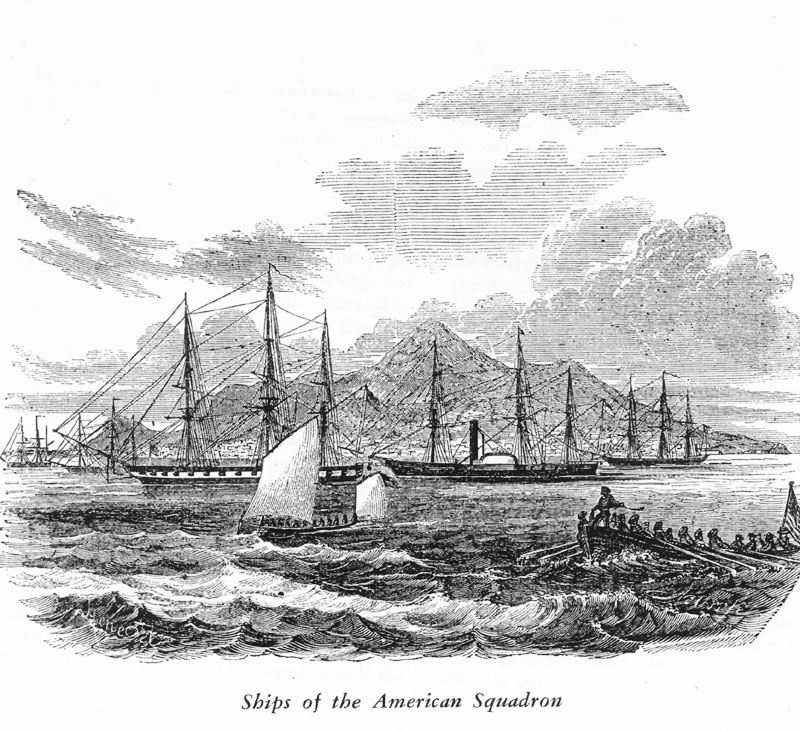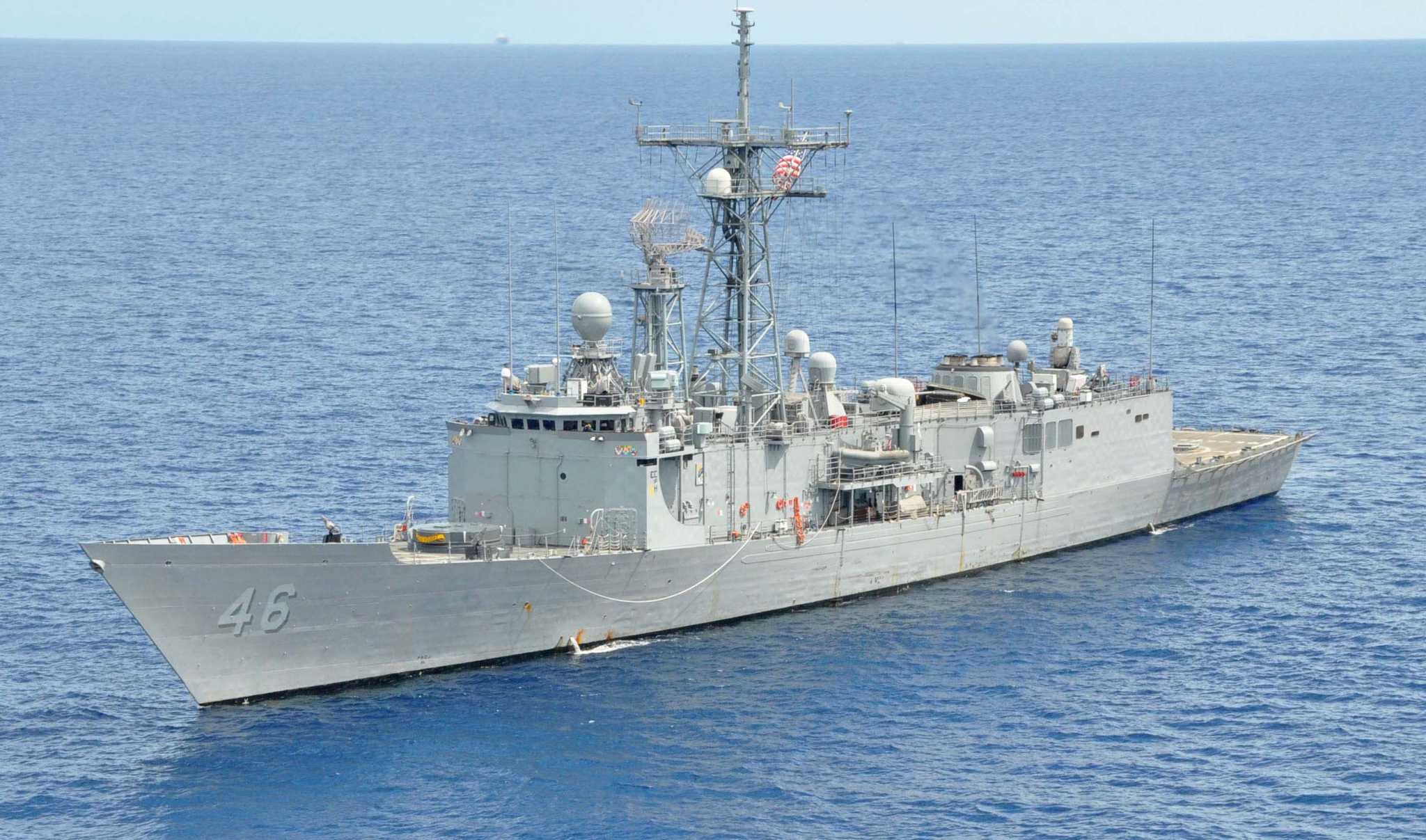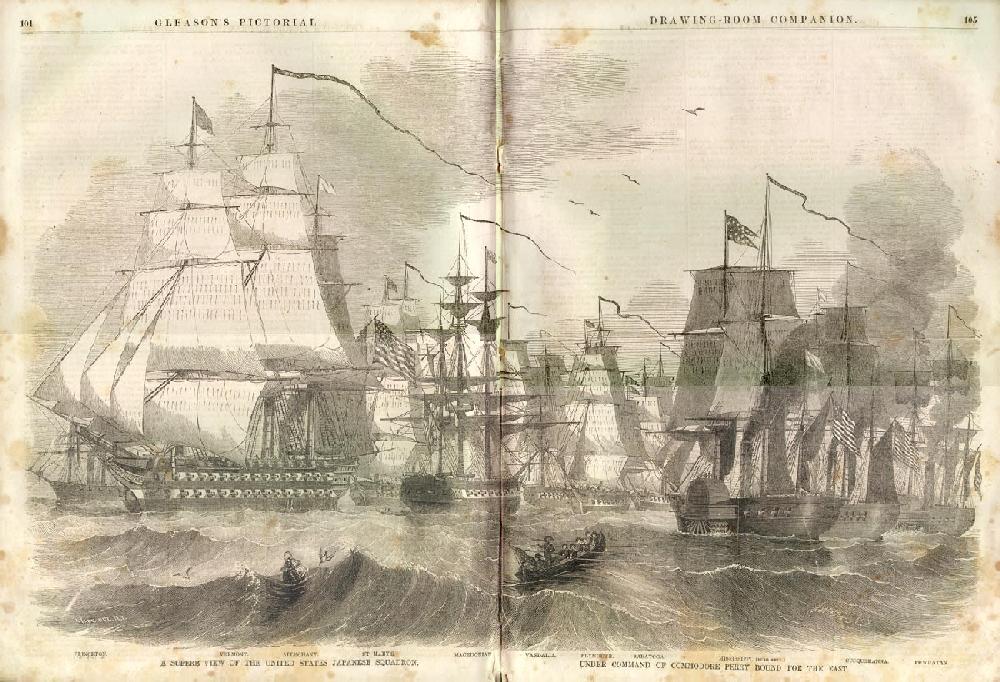

Whenever ships of the United States are thrown or wrecked on the coast of Japan, the Japanese vessels will assist them, and carry their crews to Simoda or Hakodadi and hand them over to their countrymen appointed to receive them. Note- A tariff of prices shall be given by the Japanese officers of the things which they can furnish, payment for which shall be made in gold, and silver coin.

The time for opening the first named port is immediately on signing this treaty the last named port is to be opened immediately after the same day in the ensuing Japanese year. The port of Simoda, in the principality of Idzu and the port of Hakodadi, in the pricipality of Matsmai are granted by the Japanese as ports for he reception for American ships, where they can be supplied with wood, water, provisions and coal, and other articles their necessities may require, as far as the Japanese have them.

There shall be a perfect, permanent and universal peace, and a sincere and cordial amity, between the United States of American on the one part and between their people, respectfully, (respectively,) without exception of persons or places.

The United States of America and the empire of Japan, desiring to establish firm, lasting and sincere friendship between the two nations, have resolved to fix, in a manner clear and positive by means of a treaty or general convention of peace and amity, the rules which shall in future be mutually observed in the intercourse of their respective countries for which most desirable object the President of the United States has conferred full powers on his commissioner, Matthew Calbraith Perry, special ambassador of the United States to Japan and the august sovereign of Japan has given similar full powers to his commissioners, Hayashi-Daigaku-no-kami, Ido, Prince of Tsus-Sima Izawa, Prince of Mmimasaki and Udono, member of the Board of Revenue.Īnd the said commissioners after having exchanged their said full powers and duly considered the premises, have agreed to the following articles: The treaty, written in English, Dutch, Chinese, and Japanese, was signed on March 31, 1854. The outcomes of the treaty included opening trade with American vessels in some Japanese ports, protection for American sailors and vessels in Japan, and the formation of a US consulate in Japan. The Japanese were hesitant to end their long-established isolation, but Perry’s show of military force and hardline diplomatic style pressured them to accept his terms. It successfully secured the primary objective of the Perry expedition: opening Japan for trade with the US. The Treaty of Kanagawa was the first treaty between the United States of America and Japan.


 0 kommentar(er)
0 kommentar(er)
